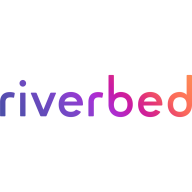

Find out in this report how the two Application Performance Monitoring (APM) and Observability solutions compare in terms of features, pricing, service and support, easy of deployment, and ROI.
| Product | Market Share (%) |
|---|---|
| LogicMonitor | 0.8% |
| Alluvio Aternity | 0.5% |
| Other | 98.7% |


| Company Size | Count |
|---|---|
| Small Business | 1 |
| Midsize Enterprise | 4 |
| Large Enterprise | 32 |
| Company Size | Count |
|---|---|
| Small Business | 10 |
| Midsize Enterprise | 9 |
| Large Enterprise | 8 |
Alluvio Aternity full-spectrum Digital Experience Management provides insight into the business impact of customer and employee digital experience by capturing and storing technical telemetry at scale from employee devices, every type of business application, and your cloud-native application service.
It also helps you resolve issues quickly by showing you response time breakdown between client device, network, and application back ends. Aternity provides AI-powered visibility into the end user experience of every cloud, SaaS, thick client, or enterprise mobile app, whether it runs on a virtual, physical, or mobile device.
Aternity Features
Aternity has many valuable features, including:
Aternity Benefits
Some of the biggest advantages the Aternity offers include:
Reviews from Real Users
Below are some reviews and helpful feedback written by Aternity users.
PeerSpot user Ryan P., Head of Cyber Security Engineering & Oversight at a media company, says, "The most valuable thing that you get from Aternity is very broad visibility. You get visibility of your network, of your endpoints, of your software usage, your application performance, capacity, in one pane of glass. We had 20 to 30 IT tools, including application performance monitoring, network monitoring, security, endpoint detection, network protection, capacity management, service management — every kind of monitoring you can imagine. But Aternity was always the first place that I turned for anything, because you can see everything in it."
An Endpoint Administration Manager at a financial services firm mentions, “It gives you the ability to filter the comparison by geography, industry, or company size.” He also adds, “We have absolutely seen ROI. It's really given us a very high level of visibility that we've just not ever had.”
A Regional Network Manager at a recruiting/HR firm comments, "Aternity provides metrics about actual employee experience of all business-critical apps, rather than just a few. It does some out-of-the-box monitoring for the Office suite, but you can create custom monitoring for any of your applications, whether a web client or a desktop application."
A Sr. IT Manager at a manufacturing company states, "The most valuable feature is the application performance troubleshooting because Aternity is able to provide the performance from the end-user perspective. It doesn't just give the standard application logon time, etc., rather it's also able to measure the performance inside the application, the performance of specific transactions in the application, and break it down into three elements: the client time, the network time, and the server time. This gives us a lot of insights into what we need to focus on to improve the performance of an application."
LogicMonitor offers flexible IT monitoring with customizable dashboards and robust alerting capabilities. It integrates seamlessly with third-party apps like ServiceNow and provides a single-pane view for diverse IT environments, aiding in proactive issue resolution and enhancing operational efficiency.
LogicMonitor stands out with its capability to monitor diverse infrastructures including Cisco Voice systems, data centers, and virtual environments. Supporting servers, storage, networking devices, and applications, it provides seamless integration with cloud services like AWS and Azure. Users leverage its scalability and flexibility, benefiting from dynamic thresholds, anomaly detection, and detailed visualization. All these features contribute to improved management of IT assets and streamlined operations. Users suggest improvements in mapping, reporting, and automation for remediation, desiring more customizations and an expansive application performance monitoring toolset.
What are LogicMonitor's key features?LogicMonitor is widely implemented across industries, providing monitoring for infrastructure in sectors like telecommunications, cloud computing, and managed services. Managed service providers particularly value its ability to track client environments, deliver proactive alerts, and generate comprehensive reports, while its integration with cloud platforms like AWS and Azure offers users centralized management and visibility into IT assets worldwide.
We monitor all Application Performance Monitoring (APM) and Observability reviews to prevent fraudulent reviews and keep review quality high. We do not post reviews by company employees or direct competitors. We validate each review for authenticity via cross-reference with LinkedIn, and personal follow-up with the reviewer when necessary.